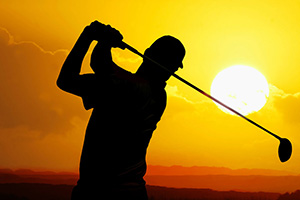Peak Sports Performance
Helping You to Improve in an Individual Sport or Athletic Competition
Art will help competitive sport participants to increase their winning percentages by working on the mental/emotional aspects that impact the technical skills of any sport. Serious competitive athletes usually have a coach to help them perfect their physical game. Often the other game – the “head” game – is overlooked, and it has a significant influence on performance, either positive, or negative. Art is the head coach of U-Solutions, LLC. The “U” stands for “Unconscious” – where most of your best solutions reside.
Most athletes are familiar with the benefits of “visualization.” But it is a two-edged sword. Visualization does give the best athletes a competitive edge – once they have learned how to avoid the impact of negative visualization. Art teaches advanced visualization skills (like Reverse Visualization) to create peak performance and explores ways to prevent the ones that bring performance down.
There are at least two different “realities”: the outside one and the inside one. Art helps sports participants to learn how to use both. For example, competitive athletes have a comfort zone based on their relative position versus the competition. In golf, players may play their best game when they are way ahead, or slightly ahead, or slightly behind, or way behind. They know this position by seeing the leader board, or from their caddy. This is an external reality. Art teaches golfers and other athletes how to also access an inner reality that keeps them in their comfort zone while playing their game.
Things that have happened most recently generally produce an outsized effect on awareness and performance. Art teaches quick recovery techniques using time distortion to push poor performance far into the past, where it has little or no negative impact on current performance. This skill is also useful when playing a fast game, so the high-performance athlete can experience the action as if in slow motion.
There are at least two different ways to look at what is happening. You can look using foveal vision – a laser-like focus that is intense and narrow, where the “object” is separated from the “field.” This type of vision produces mild to profound fight-or-flight reactions in the body. There is also peripheral vision – a wide-angle visual awareness that takes in both the object(s) and also the field in which the object is embedded. This type of vision produces feelings of calmness and safety in the body. All good quarterbacks and basketball players develop the ability to quickly shift from wide-angle to laser vision and back. If they used only laser vision, they would miss opportunities to get the ball to the player most likely to score. Art shows athletes how to develop this learned skill.
One of the most effective ways for athletes to achieve peak performance is to understand, intellectually and behaviorally, the difference between practice and performance. Many athletes bring their practice behaviors into a competition, not realizing that they really need to bring their peak performance behaviors. Art helps athletes learn the difference between these two mind-sets, and how to shift out of their practice behaviors and into their performance behaviors, mentally and emotionally.
FOR MORE INFORMATION

“There is an old axiom that is only a slight exaggeration: ‘Golf is 90% mental and the rest mental.’ Art Emrich worked with me to improve the mental part of my golf game, and I promptly went out and broke 80 – a 5 stroke improvement. I heartily recommend Mr. Emrich’s U-Solutions program for any golfer who is serious about improving his game.”
Golfing Client G.H., Sarasota, FL

